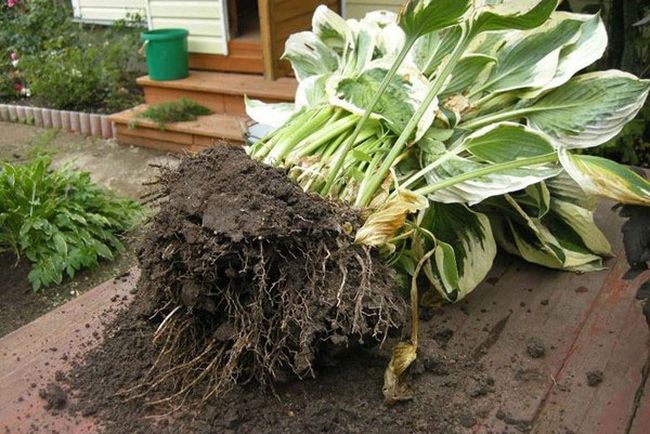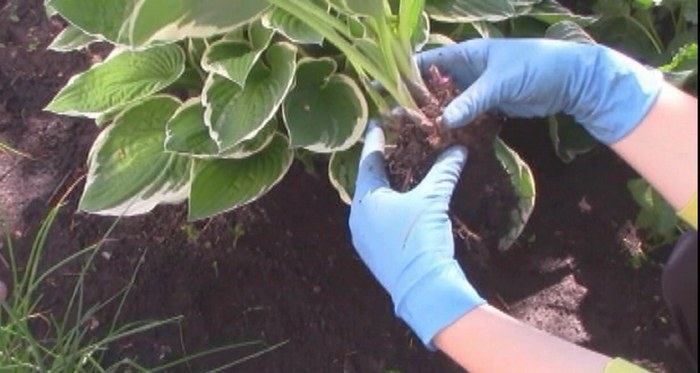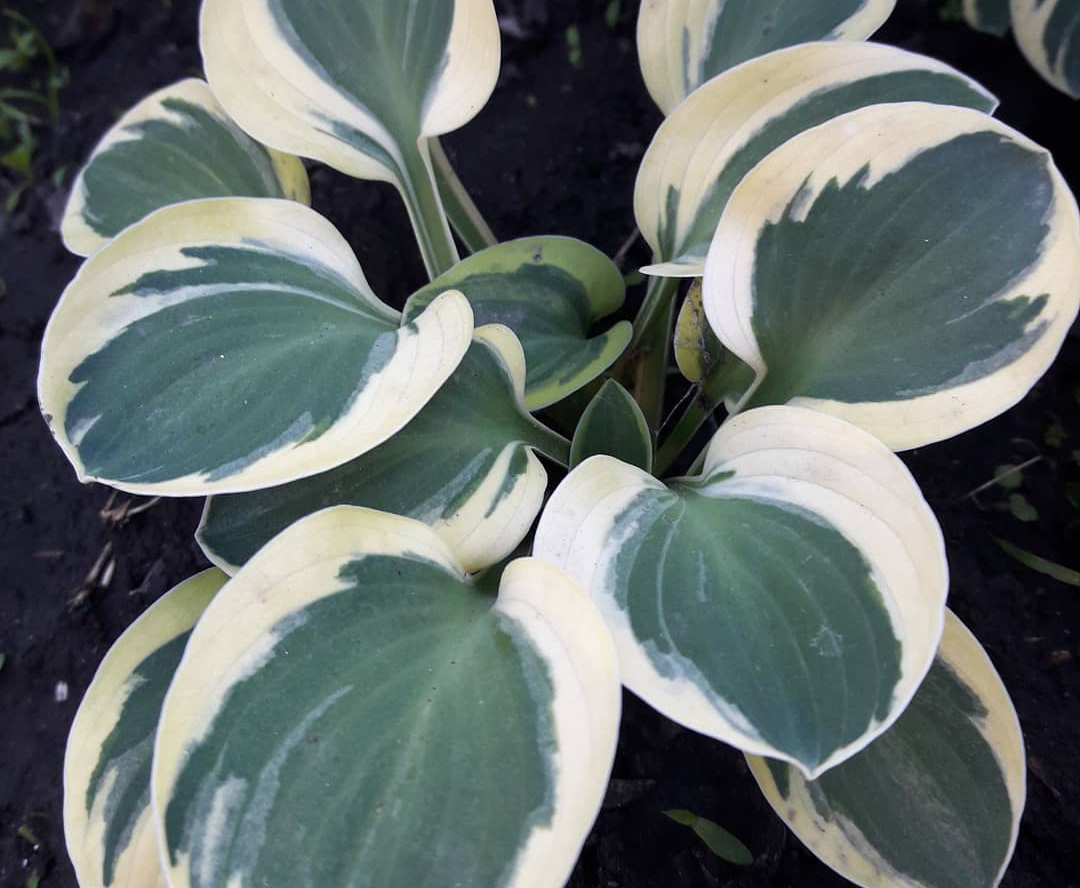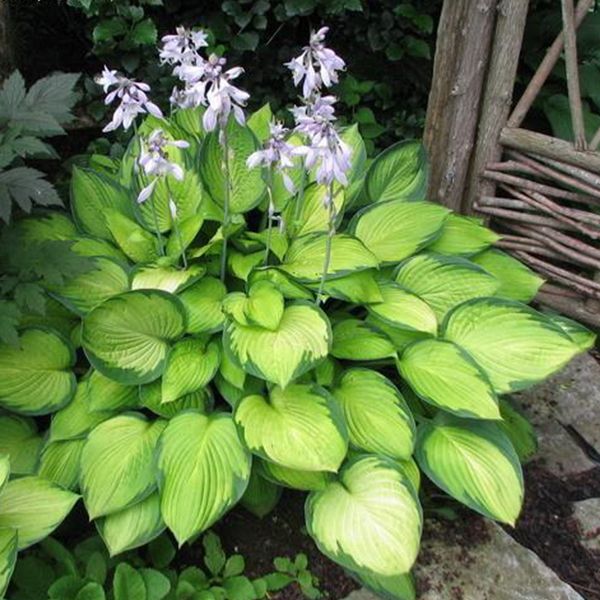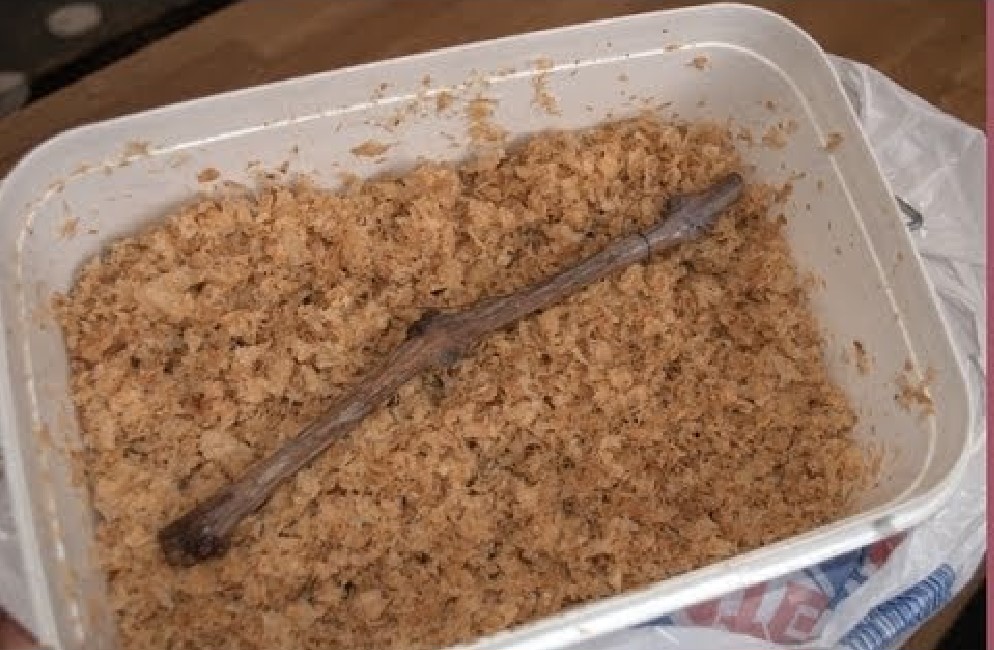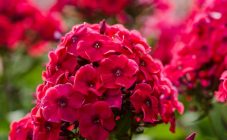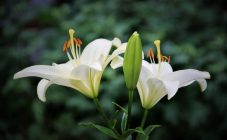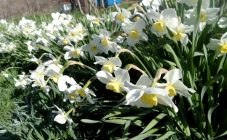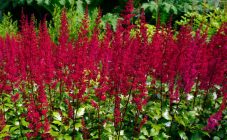Content:
Hosta (funkia) is a perennial plant that has earned the love of flower growers for its large decorative leaves. She does not require too much attention when leaving, but her transplant has a number of nuances. It is important to know how and when you can transfer the host to another location.
Transplant reasons
In one place the plant can be from 15 to 20 years. During the growing period, the flower forms a large shrub with a powerful root system. The host is transplanted for several reasons:
- plant propagation;
- too thickened bush;
- a measure of protection against diseases;
- redevelopment of the garden;
- poorly chosen landing site.
Regardless of the reason for the transplant, you need to know exactly when you can transplant the host from one place to another.
Transplant timing
When is it simply necessary to transfer a host to a new location? In order to avoid strong overgrowth of the bush, it is recommended to transplant it once every 5 or 6 years. Younger plants go through a long period of adaptation, they can stop development for two years.
How to plant the host and when? According to recommendations from the summer cottage literature, the transplant can be done in spring, summer and autumn. Experienced gardeners advise replanting the bushes at the most favorable time:
- in spring - in the last days of April, until the first half of May.
- in the fall - in the last days of August, until mid-September.
Spring transplanting is not suitable for all plants. The Tokudama, Siebolda variety and their hybrids can be transplanted only in the fall, since their roots do not grow in the spring.
Different varieties of hosts have their own characteristics, as well as the climate of the regions. Even in a separate Moscow region, different areas differ in climatic conditions. When to seat a host in the Moscow region? For central Russia, replanting in the autumn is recommended.
The correct timing of transplanting different varieties can be learned empirically. For Siberia and the Urals, the optimal transplant period is at the end of May.
Is it possible to transplant a flowering host
Summer transplant hosts when is the best time to start? If you have experience, you can replant all summer, but it is recommended in the second half of July. For an earlier transplant, you will need planting material with a lump of earth. Before transplanting, the mother plant is well watered.
It is recommended to leave only part of the leaves on the seedlings. This will avoid increased evaporation of moisture and will contribute to a more active growth of the root system. Further transplanting algorithm in summer is the same as in spring. It is necessary to monitor the moisture content of the soil and, at first, shade the young hosts with a shield.
How to transplant to host
Transfer of hosts begins with the selection of a place. Since in the wild, the plant lives in river floodplains and wet meadows, a shaded place is better for it. The sun's rays in the morning are enough for her. Although the new hybrid varieties thrive in bright sunlight.
The correct lighting can be chosen according to the appearance of the plant:
- hosta with green, blue leaves will flower better in partial shade;
- The hosta with yellow, golden, white leaves and variegated color prefers morning and evening sunlight.
The plant grows well in humus loamy soil. Transplanting into sandy soil will result in shrinking and shedding of foliage due to lack of moisture and nutrients. Clay soil retains moisture and provokes hosta root rot. It is recommended to structure the soil by adding sand, peat, rotten sawdust.
Spring transplant
When can hosta be planted in spring? The spring period (late April-early May) is considered the most favorable for replanting hosts. At this time, the leaf cones protrude, the root system grows. Transplanting in spring is good because the plant has enough time to grow stronger before the onset of cold weather. They choose a cloudy day and begin the transplant process.
Wells are prepared with a slightly larger diameter than the hosta roots. This is also due to the horizontal orientation of its roots. The depth of the hole is 40 cm. The bottom of the hole should be covered with a layer of drainage (crushed stone, broken brick), and humus should be sprinkled on top. Depending on the size of the plants, the distance between adjacent holes is determined:
- for dwarf ones - 0.2 m;
- for medium - 0.5 m;
- for large - 1 m.
To do this, you need to dig a little ground around the bush. Garden forks are the least root-damaging, they are used as leverage and lift the mother plant along with a large lump of soil. Digging up a powerful bush sometimes requires the help of a second person.
When transplanting hosts by dividing the main bush, you need to clear its roots from the ground, inspect for the presence of slugs, and rinse. Then you should remove dry, damaged areas of the roots, prune them with pruning shears to rejuvenate the hosts. It is recommended to keep the plant in a solution of potassium permanganate.
You can divide the main plant into divisions with neat rotational movements, the accrete parts are separated with a knife. The instrument must be clean and can be wiped with alcohol to rule out any infection. The rhizome is incised and divided by hand. The sections of the cuts must be sprinkled with ash, treated with a fungicide solution. Delenka should be with 1-2 rosettes of leaves, for rapid growth, you can leave 3-4 rosettes. It will be possible to get a fully blossoming bush only next year.
Delenki begin to be planted in holes so that the root collars are level with the ground. After sprinkling with soil, it is important to compact the soil well to eliminate air pockets. After all the procedures, it remains for the host to water and mulch with humus.
Autumn transplant
Unlike spring planting, in early autumn (from late August to mid-September), fertilizer does not need to be applied to the hole. This is due to the end of the flowering period. A plant that has passed into dormancy after fertilization can return to growth. The rooting period of the plant is a month. Planting material should be chosen very carefully, since the winter hardiness of young hosts depends on it.
After planting, it is recommended to cut off all the leaves so that the stalks remain, 10 to 15 cm long. This will allow the hosta to root better, accumulate nutrients in the rhizome before the winter period. At the same time, you need to take care of the covering material. It must retain heat well, while allowing moisture and air to pass through. Agromaterial will do. To prevent the roots of the seedlings from freezing, mulching is carried out.
When to transplant the host if the autumn transplant time was missed? We must wait for spring.Planting material with clipped foliage can be stored in plastic bags with wet sawdust and soil in the refrigerator or cellar at temperatures from +3 to +5 degrees.
Recommendations of experienced summer residents
It is not worth replanting the host to the place where another variety has already grown. This increases the likelihood of diseases, as well as the survival time of the bush.
In order for the bush to have a neat shape and beautiful leaves, young flower arrows need to be broken out for the first few years. After all, most hosts are not grown for flowers, but for ornamental leaves. But this rule does not apply to varieties with white, double flowers (Royal Standard, Fragrant Bouquet, Aphrodite, Summer Fragrance).
Mulching with humus or compost of miniature and dwarf plant varieties can cause the hosta's root collar to heat up. It is better to use gravel, pebbles, but not in direct sunlight - heated stones can burn the leaves of the dwarf hosta. Pine bark and peat are also not recommended as mulch as they make the soil acidic. Mulch can become an object of attraction for the main enemies of the hosts - slugs. You can cope with them by introducing mulch from eggshells and shell chips.
Hosta is so unpretentious in care that even a beginner can safely grow it in the garden. The main thing is to follow the proper care. When creating favorable conditions for growth, a picturesque plant will delight the owner with its beauty for many years.
